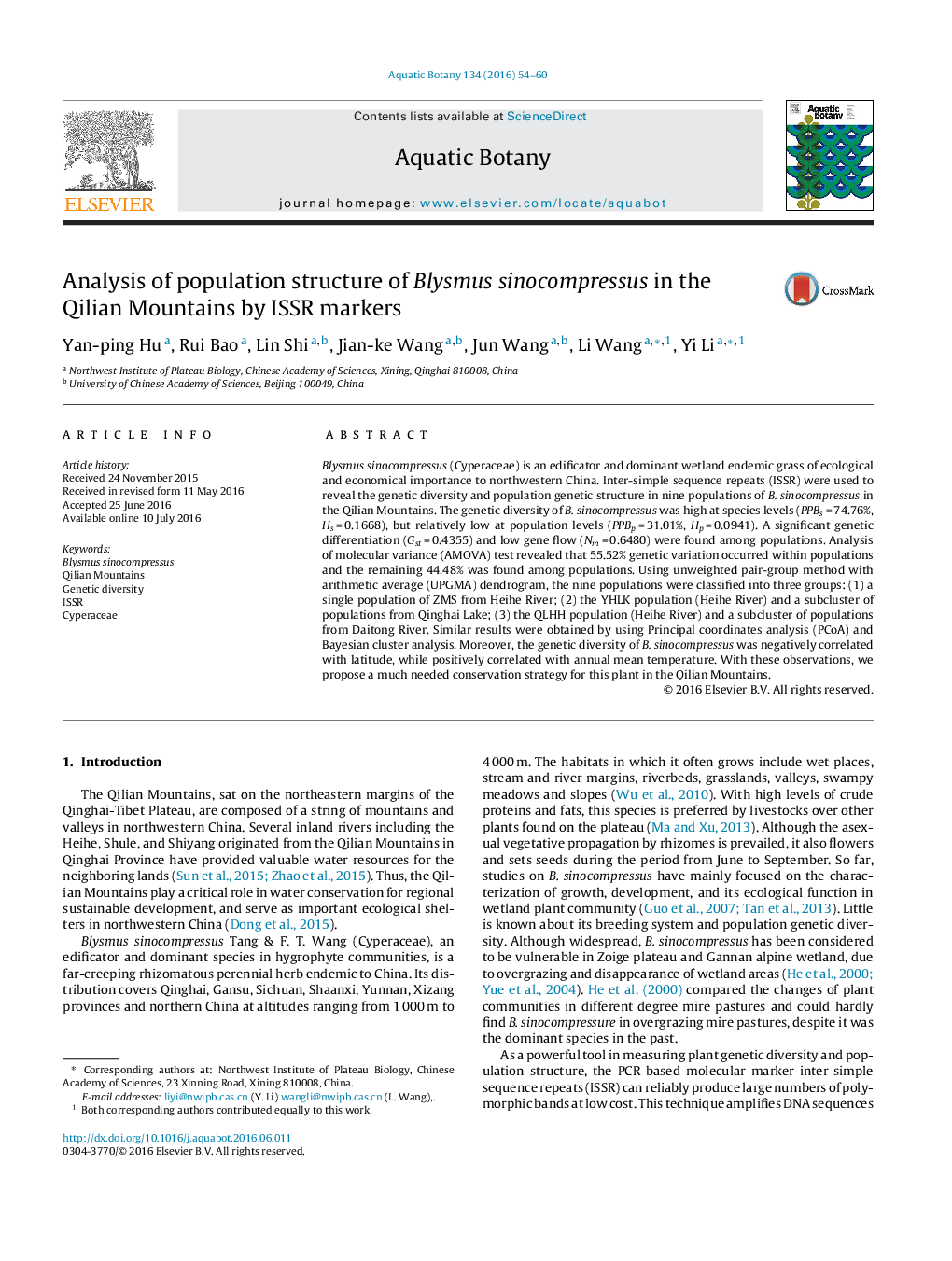| Article ID | Journal | Published Year | Pages | File Type |
|---|---|---|---|---|
| 4527546 | Aquatic Botany | 2016 | 7 Pages |
•Blysmus sinocompressus is a dominant wetland plant endemic to China.•Genetic diversity in B. sinocompressus from the Qilian Mountains is characterized using ISSR markers.•The low genetic diversity within populations and high differentiation are likely due to a mixed mating system.
Blysmus sinocompressus (Cyperaceae) is an edificator and dominant wetland endemic grass of ecological and economical importance to northwestern China. Inter-simple sequence repeats (ISSR) were used to reveal the genetic diversity and population genetic structure in nine populations of B. sinocompressus in the Qilian Mountains. The genetic diversity of B. sinocompressus was high at species levels (PPBs = 74.76%, Hs = 0.1668), but relatively low at population levels (PPBp = 31.01%, Hp = 0.0941). A significant genetic differentiation (Gst = 0.4355) and low gene flow (Nm = 0.6480) were found among populations. Analysis of molecular variance (AMOVA) test revealed that 55.52% genetic variation occurred within populations and the remaining 44.48% was found among populations. Using unweighted pair-group method with arithmetic average (UPGMA) dendrogram, the nine populations were classified into three groups: (1) a single population of ZMS from Heihe River; (2) the YHLK population (Heihe River) and a subcluster of populations from Qinghai Lake; (3) the QLHH population (Heihe River) and a subcluster of populations from Daitong River. Similar results were obtained by using Principal coordinates analysis (PCoA) and Bayesian cluster analysis. Moreover, the genetic diversity of B. sinocompressus was negatively correlated with latitude, while positively correlated with annual mean temperature. With these observations, we propose a much needed conservation strategy for this plant in the Qilian Mountains.
